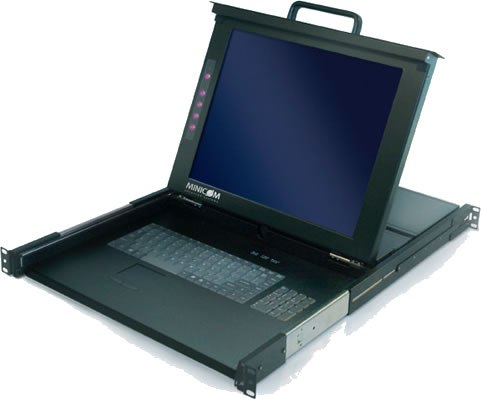

Tips: both WiringPi and Python control serial port via reading and writing /dev/ttyAMA0, and we can also control serial port via sysfs. The expected result is the same as the C program.įor more details about python-serial, see:
#MINICOM 2.2 INSTALL#
And messages sent from the monitor will be printed on the monitor again.īefore using this program, you should install the serial library for Python. "Hello Wrold !!!", will be printed on the serial monitor. If((fd = serialOpen("/dev/ttyAMA0",115200)) < 0)return 1 Ī message sent to Windows, i.e.
#MINICOM 2.2 SOFTWARE#
Then open a serial monitor tool on the PC (Arduino software comes with a Serial Monitor, you can use it). Whilst, connect the TX and RX pin to the USB to serial module attached to the PC. ttyAMA0 also should be changed to ttyS0 in the following program as long as using a Pi 3. Note: ttyAMA0 is used to communicate with the on-board Bluetooth device on Raspberry Pi 3, in this case, the serial port must be changed to ttyS0.
#MINICOM 2.2 MANUAL#
You can read the detailed manual with the command man minicom. The baud rate of serial is set to 115200 by default, which can be changed by -b 9600.The followed device, /dev/ttyAMA0, is the serial device specified by -D -D Specify the device, overriding the value given in the configuration file.Minicom is a tool for serial debugging over Linux environment. In order to use it as a peripheral and connect it to a PC, for example, a cable with a type-C plug on one end and a Standard-A plug on the other is needed.We supposed that you have a USB to serial module (also is embedded in Pioneer600) and attach it to your PC for serial communication.ġ.

a USB flash drive) to it, either use a peripheral with type-C connector or use type-C to type-A adapter. In order to use it as a host and connect a peripheral (e.g. With OTG, the board can be either a host, or a peripheral. $ minicom -D /dev/ttyACM0 # Launch minicom on Host computer to login to target tty console # sudo systemctl enable # Spawn a new tty session on ttyGS0 # echo g_serial > /etc/modules-load.d/g_nf # Load g_serial module on boot The following uses the g_serial module to spawn a new debug console over USB: The partition should be loaded on the PC as a mass storage device. The following uses the g_mass_storage module to expose the root partition on eMMC to a PC while booting from recovery SD card:


In order to use the board as a peripheral, an appropriate module needs to be loaded.įor example, there is an Ethernet gadget module called g_ether, a mass storage gadget called g_mass_storage, a serial gadget called g_serial, etc.Ĭonnect a type-C plug to Standard-A plug cable between the board and a host PC, and run the following examples on the target board: # cat Using the USB OTG port under Linux 2.1 As host (default) Provided by: minicom2.7-1build1amd64 NAME minicom - friendly serial communication program SYNOPSIS minicom options configuration DESCRIPTION minicom is a communication program which somewhat resembles the shareware program TELIX but is free with source code and runs under most Unices. Note: You can read the current dr_mode value on a running target, by executing the following command: If you build the kernel manually from source code, you should build only the device trees and copy them to your SD card or eMMC.


 0 kommentar(er)
0 kommentar(er)
